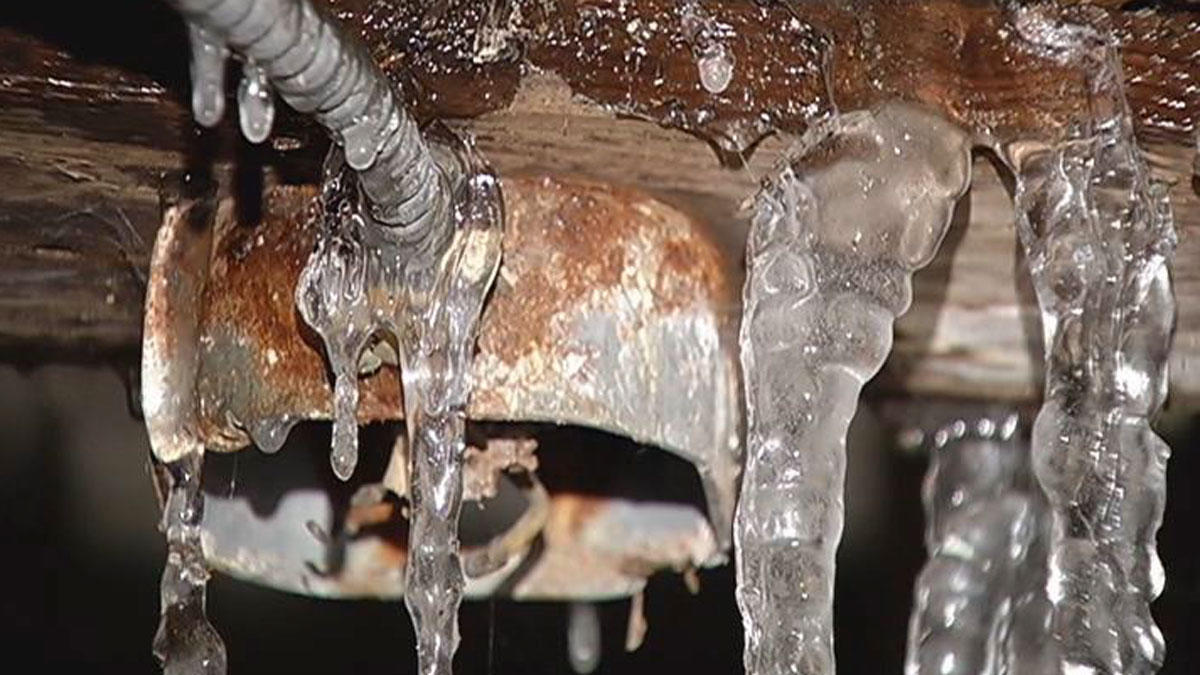How to Keep Your Pipes from Cold Weather Issues: Crucial Advice
How to Keep Your Pipes from Cold Weather Issues: Crucial Advice
Blog Article
We have discovered this article involving Helpful Tips to Prevent Frozen Pipes this Winter directly below on the net and figured it made sense to talk about it with you on this page.

Winter can damage your plumbing, especially by freezing pipes. Here's exactly how to avoid it from occurring and what to do if it does.
Introduction
As temperature levels decrease, the danger of frozen pipelines boosts, potentially resulting in pricey repair work and water damages. Recognizing just how to stop frozen pipelines is critical for house owners in cold climates.
Avoidance Tips
Protecting susceptible pipelines
Wrap pipelines in insulation sleeves or use heat tape to shield them from freezing temperatures. Concentrate on pipes in unheated or outside locations of the home.
Heating methods
Maintain interior areas properly heated, particularly locations with pipes. Open cupboard doors to allow cozy air to flow around pipelines under sinks.
How to identify frozen pipes
Search for reduced water flow from taps, unusual odors or noises from pipes, and visible frost on subjected pipes.
Long-Term Solutions
Architectural changes
Take into consideration rerouting pipelines far from outside walls or unheated areas. Add additional insulation to attics, cellars, and crawl spaces.
Upgrading insulation
Invest in high-grade insulation for pipes, attic rooms, and wall surfaces. Correct insulation aids keep constant temperatures and minimizes the risk of frozen pipelines.
Protecting Outside Plumbing
Yard pipes and outdoor taps
Separate and drain yard hose pipes prior to wintertime. Install frost-proof spigots or cover exterior faucets with shielded caps.
Understanding Icy Pipes
What triggers pipelines to freeze?
Pipelines ice up when exposed to temperature levels listed below 32 ° F (0 ° C) for extended periods. As water inside the pipelines ices up, it increases, putting pressure on the pipe walls and potentially creating them to break.
Threats and damages
Frozen pipes can result in water system interruptions, residential or commercial property damage, and costly repair work. Burst pipes can flood homes and create extensive architectural damages.
Indications of Frozen Pipeline
Identifying icy pipes early can prevent them from breaking.
What to Do If Your Pipes Freeze
Immediate actions to take
If you believe frozen pipelines, keep taps available to alleviate stress as the ice melts. Make use of a hairdryer or towels soaked in warm water to thaw pipes gradually.
Conclusion
Protecting against frozen pipes calls for aggressive actions and fast actions. By understanding the reasons, signs, and safety nets, property owners can protect their plumbing throughout winter.
5 Ways to Prevent Frozen Pipes
Drain Outdoor Faucets and Disconnect Hoses
First, close the shut-off valve that controls the flow of water in the pipe to your outdoor faucet. Then, head outside to disconnect and drain your hose and open the outdoor faucet to allow the water to completely drain out of the line. Turn off the faucet when done. Finally, head back to the shut-off valve and drain the remaining water inside the pipe into a bucket or container. Additionally, if you have a home irrigation system, you should consider hiring an expert to clear the system of water each year.
Insulate Pipes
One of the best and most cost-effective methods for preventing frozen water pipes is to wrap your pipes with insulation. This is especially important for areas in your home that aren’t exposed to heat, such as an attic. We suggest using foam sleeves, which can typically be found at your local hardware store.
Keep Heat Running at 65
Your pipes are located inside your walls, and the temperature there is much colder than the rest of the house. To prevent your pipes from freezing, The Insurance Information Institute suggests that you keep your home heated to at least 65 degrees, even when traveling. You may want to invest in smart devices that can keep an eye on the temperature in your home while you’re away.
Leave Water Dripping
Moving water — even a small trickle — can prevent ice from forming inside your pipes. When freezing temps are imminent, start a drip of water from all faucets that serve exposed pipes. Leaving a few faucets running will also help relieve pressure inside the pipes and help prevent a rupture if the water inside freezes.
Open Cupboard Doors
Warm your kitchen and bathroom pipes by opening cupboards and vanities. You should also leave your interior doors ajar to help warm air circulate evenly throughout your home.

Do you enjoy more info about Prevent Frozen Pipes ? Try to leave a remark further down. We will be delighted to see your reactions about this piece. In hopes that you visit us again soon. For those who liked our blog entry please be sure to share it. Thank-you for your time spent reading it.
Go Deal Now Report this page